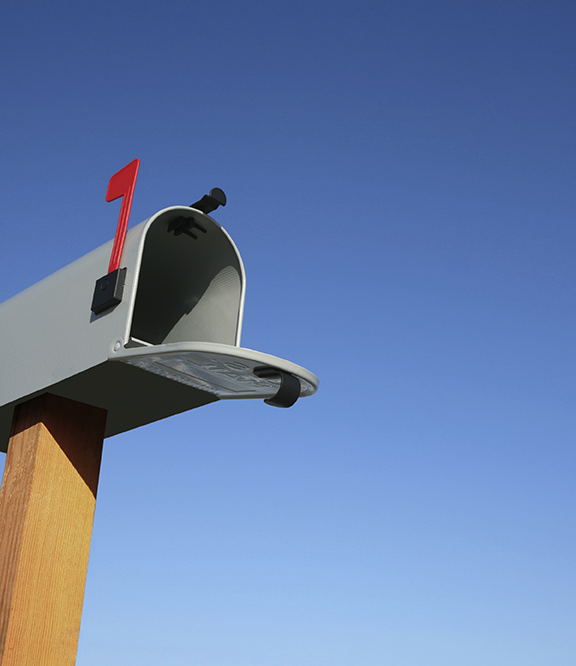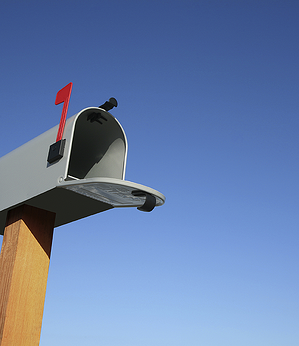Should You Be Charging Your Customers for Paper Statement Delivery?
July 10, 2013 •Brian Watson

 Technology can make the seemingly-impossible a bona fide reality.
Technology can make the seemingly-impossible a bona fide reality.
Consider this stranger-than-fiction example: some billers have actually started charging customers to receive a paper bill from them each month.
Pretty wacky, right?
Ten years ago, if you would have casually remarked to the CEO of your company that you were working on a plan that would assess customers a fee just for the privilege of receiving paper billing, they would’ve likely looked at you like you were a little off (if not just plan bonkers).
And yet, here we are in 2013, and online billing and payment has reached enough of a tipping point that prominent retailers like Victoria’s Secret and Ann Taylor are now charging consumers a $1.00 “paper statement fee”.
Others, like Sprint, are taking a more gradual, though still untraditional approach: customers can receive a complementary “summary” paper statement, but are asked to pay an extra $1.99 fee to receive delivery of a paper statement with itemized billing information.
To Charge or Not to Charge?
The practice itself might be controversial, but the logic behind it is undeniably intuitive. First off, lots of people are paying their bills online these days and many more are thinking about making the move.
A Western Union study from earlier this year reported that 46% of all bills are now paid online and another 19% are handled via an automatic or recurring payment channel. Taken together, that’s nearly two thirds of all payments processed. What’s more, 39% of U.S. consumers reported that they expect to increase the number of bills they pay online in 2013.
Next: if a consumer is on or, really, anywhere near the fence about eStatement delivery and online payment, the idea that they’ll be assessed a dollar or two fee each month to receive a paper bill is a pretty compelling reason to migrate to EBPP.
And finally: printing and mailing statements can be expensive. There’s paper, postage, and labor costs that increase billing overhead. Paper statement processing can get especially pricy if customers expect your business to provide usage summaries or transaction details that can easily stretch page after page.
eStatement delivery helps reduce that cost burden. And, at the very least, charging for paper statements gives billers a way to offset mail costs and make statement printing more efficient.
Considering the Costs
Lowering customer billing overhead by persuading consumers to switch to a faster, more efficient billing channel -- and charging them if they don’t -- is a fast way to reduce billing costs and increase EBPP adoption.
But customer-facing, dollars-and-cents business decisions like this almost always have a risk/reward component. And when you’re asking customers to pay for something that has been considered a free service for decades and decades, you’re also running the very real risk of blow-back from customers: negative publicity, customer loyalty concerns, even class-action lawsuits.
That’s exactly what happened to T-Mobile in 2009 when they announced a policy that would charge subscribers $1.50 per month to receive a paper version of their billing statement.
Customers immediately fired back: voicing their objections directly to the company, heading to the web to start online petitions, and flooding regulatory agencies with complaints.
The result? T-Mobile quickly rescinded the proposed fee, nipping the program in the bud before it even had a chance to be rolled out nationwide.
A Customer-Friendly Alternative
Most billers are on the same page when it comes to EBPP -- its built-in speed and automation advantages simply make it a much more efficient, effective way to collect from consumers.
Consumers largely share that sentiment. And why not? It’s faster, more convenient, and easier to track and use than the paper alternative.
But they've been slower to embrace paperless billing. eStatement delivery still lags behind payment adoption for the simple reason that many consumers still want to receive a physical copy of their statement, like they always have. And without a really good reason, they're in no hurry to change.
To these customers, there's real value in being able to receive a tangible, hard copy bill each month. Or with the peace-of-mind that comes from avoiding the phishing schemes and mass-password-hacks that have become commonplace on the web.
And, as the T-Mobile example proves, they’re willing to go the extra mile to fight for their preferred billing channel.
Look, I understand the allure of a pay-for-delivery approach: from lower costs to billing automation, there’s a lot to like. But why risk alienating a potentially large segment of your customer base? Or causing an avalanche of bad press?
Maybe one day adoption levels will support the practice. Until then, the risks favor a more measured, organic approach to growing user acceptance of EBPP; one that embraces consumers’ preference for a wide variety of billing channels and uses a carrot -- not a stick -- as a way to motivate user adoption.
Quick Tips for Building eStatement Adoption
Here are a few low-cost, high-impact tips that can help you quickly move the needle on user acceptance of eStatement delivery and online payment.
• Make eStatement delivery the default option for new users
If your customers start using online billing and payment from the beginning of their relationship with your company, chances are they’re going to keep using it as long as they purchase from you. But don’t go overboard. You still need to avoid alienating paper statement die-hards by providing an easy opt-out mechanism back to paper delivery.
• Offer balance discounts
Remember: when you’re trying to change small behaviors, a carrot often works better than a stick. Instead of backing customers into a corner and forcing them to make a change from traditional statements to e-delivery with the threat of a paper delivery fee, why not offer them a small balance discount to enroll? It’s a win-win -- they receive a perk and you get the speed and efficiency benefits that go hand-in-hand with online billing and payment.
• Charge for paper statement upgrades
Charging for paper statement delivery runs the risk of ticking off loyal customer and harming your bottom-line. But not all statements look –- or cost -- the same. There’s no reason you should have to shoulder the cost of detail-intensive, multi-page statements that drive up statement processing overhead. We’ve all heard the horror stories of 100 page phone bills delivered to customer in a shipping box. If your customers want that level of specificity, they should have to pay for it.
Follow the lead of major phone carriers by providing customers with a free summary statement, but charging them for a detailed or itemized bill. Better yet: provide a free paper billing summary but make detailed transaction summaries only available on the web. That gives motivated customers a solid reason to enroll in EBPP.
• Use incentives to build buy-in
People love a freebie. And offering your customers a free incentive -- say a $5.00 gift card to select restaurants or retailers – or the chance to participate in a sweepstakes can help you quickly build your EBPP audience.
An incentive/sweepstakes program is simple to set-up and fulfill and easy for customers to understand. They’re also effective. For example, one of our billing partners recently instituted a 6 week gift card give-away campaign that more than tripled their adoption rate -- delivering over 25,000 new enrollments.
• Treat EBPP as an amenity
Charging customers for paper statement delivery gives customers the wrong message about online billing and payment. EBPP shouldn’t be a consequence; it should be a benefit, offering customers a convenient, fast, easy-to-use way to pay their bill and online account tools that help track payments and manage expenses.
Make sure to tout the value that customers receive from online billing and payment in your advertising and marketing, rather than treating it as just another billing feature.
What non-traditional ways are you trying to convince users to try eStatement delivery and online payment?
Get Updates
Featured Articles
Categories
- Charity Care Management (1)
- Compliance (2)
- Customer Service (8)
- Digital Front Door (1)
- Direct Mail (6)
- eBilling (1)
- EBPP (34)
- ESL Statement (2)
- eStatement (1)
- Healthcare Channel Partner Billing (1)
- IVR (3)
- Mobile Payment (11)
- Online Billing and Payment (6)
- Online Patient Payment (17)
- Outsource Print Management (4)
- Paperless Billing (4)
- Patient Engagement (2)
- Patient Friendly Billing (21)
- Print and Mail (7)
- QR Codes (1)
- Quick Pay (7)
- Security (1)
- Self-Pay Patients (9)
- Self-Pay Revenue (4)
- Statement Design (32)
- Statement Print and Mail (1)
- Statement Printing and Mailing (28)
- Statement Processing (36)
- TransPromo (1)
- Up-Front Billing (1)


